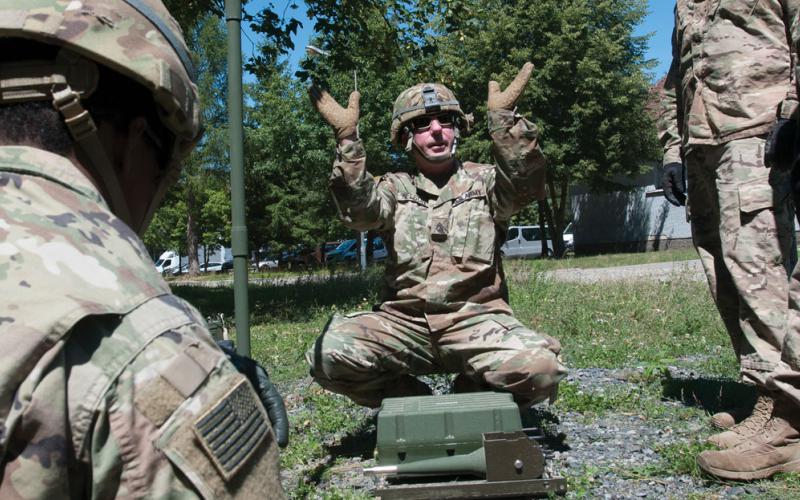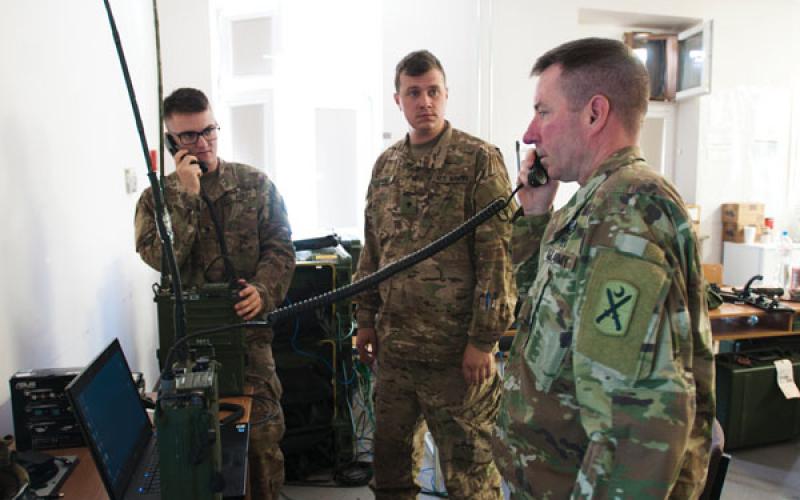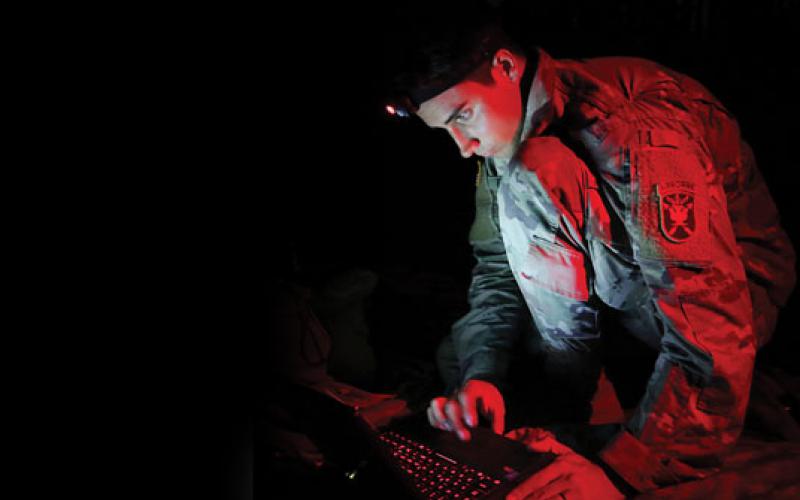
As cyber threats continue to grow, so does the reality that digital satellite communications can be degraded and denied either through digital or electromagnetic means. If these capabilities are compromised, however, high frequency radio provides a means to continue communicating even beyond the line of sight by leveraging the ionosphere to refract radio signals back to earth.
The International Communication Union Telecommunication Standardization Sector designates the high frequency (HF) range as between 3 megahertz and 30 megahertz. While this method of communication was utilized extensively up through the 1990s, it began to lose traction in the military when the availability of satellite communications (SATCOM) increased.
Among the key differences between HF, very high frequency (VHF) and ultrahigh frequency (UHF) are the multiple antenna configurations required to radiate the signal properly in HF and the atmospheric conditions that greatly affect the propagation of the signal. In addition, choosing the correct frequency for the time of day plays a crucial role in setting up HF communications. Under these conditions and given the proper setup, HF radio signals can be targeted to a geographical region, enabling beyond line-of-sight communication without using satellites.
The growing dependency on SATCOM presents a problem: Because warfighters have been training for SATCOM, the training for effectively employing HF radio has dwindled; radios in the VHF and UHF range have continued to be used for line-of-sight communications.
According to Ronald C. Wilgenbusch and Alan Heisig in an article in Joint Force Quarterly, HF is not a viable option to SATCOM, and they agree the declining amount of training is an issue. “The worldwide system of fixed HF transmitters and antennas that was once the mainstay of our HF communications systems is gone. … Even if it was still in place, the skilled HF operators needed aboard ships and ashore have been cashing retirement checks for years,” they said.
Although the windfall of baby boomer retirements is challenging all government and commercial sectors, it has been especially hard on the computer industry. However, even though many HF-trained military members are separating from the services, a younger generation of enthusiasts is coming from the intersection of do-it-yourself aficionados and hackers. They are tinkering and creating small electronic devices, often using software-defined radios in their projects. They also are exploring various radio frequency-HF communication techniques and developing new hybrid skills.
Even the National Natural Science Foundation of China concluded that HF radio use will lead to self-adaptability and an ever-changing environment. HF radio use also will encourage and leverage machine learning approaches, which will result in the development of smart anti-jamming techniques and equipment. In addition, foundation members believe heterogeneous networking—a combination of HF communications and satellite communications, military networks and civil cellular communications—will enable an integrated space-air-marine-ground communication network.
HF communication using digital modes like FT8 is an example of how techniques evolve with digital communications. The ham and hacker communities have stated that evolving methods could enhance global communications while improving the use of limited spectrum.

There is a trade-off, however. HF data rates are far lower than SATCOM data rates. Consequently, a backup plan must not only detail how to utilize HF transmissions but also outline what data should be transmitted.
For example, it may not be possible to transmit the 2-megabyte battle brief of a PowerPoint slideshow using HF radio; however, the text from the slides could be transmitted without graphics over HF radio. In addition to bandwidth constraints, directing an HF signal to a specific location requires attention to many factors, including frequency, antenna configuration and power.
Using HF radios for communication also poses other challenges that require process and equipment planning. For example, HF radio communications at shorter distances where the environment obstructs line of sight is possible with near vertical incidence skywave (NVIS) propagation. The government communications uses NVIS and has a skywave radio-wave propagation that provides usable signals at distances of up to 400 miles.
The Army Cyber Institute, West Point, New York, recently conducted HF NVIS testing at the National Training Center in Fort Irwin, California. The test included the software JS8Call, the open source program WSJT-X and single sideband modulation voice communication.
To guarantee the propagation was true NVIS, the institute’s team placed stations on either side of Tiefort Mountain and verified that VHF communication was not possible. The team then utilized results from Voice of America Coverage Analysis Program prediction software to determine the proper frequency for the time of day and used a sloped dipole antenna configuration for the NVIS link. The voice link was easily established utilizing 50 watts of power.

Finally, the institute’s team tested WSJT-X to validate FT8 digital communication, which worked as expected, and used JS8Call to send messages, which reduced power consumption considerably and continued to receive JS8Call messages flawlessly.
HF NVIS has been called a “safety net under our infrastructure” that serves as the base layer national fallback network for regional and wide area communications for government, industry, public safety and critical infrastructure when primary systems fail. Initiatives like HF NVIS enable communications resilience and situational awareness within critical infrastructure defense during catastrophic events such as natural disasters, cyber attacks or electromagnetic pulse attacks.
The U.S. Department of Homeland Security Cybersecurity and Infrastructure Agency SHAred RESources (SHARES) HF Radio Program is one example of this safety net. SHARES provides a 24-hour capability to provide an emergency communications link to support intra- or interagency mission requirements.
Source: https://www.afcea.org/